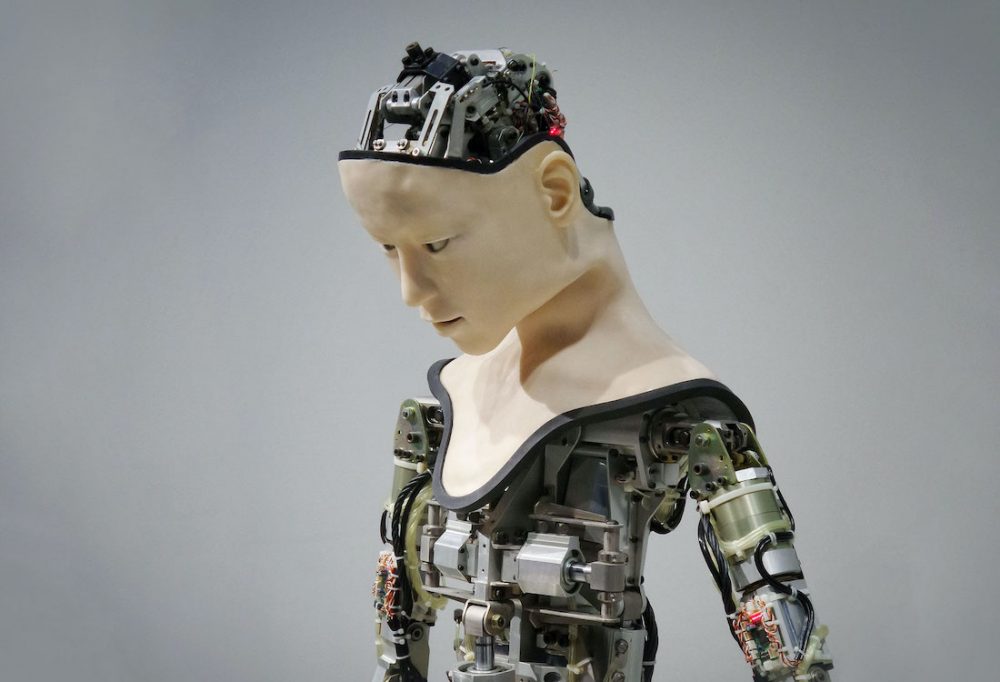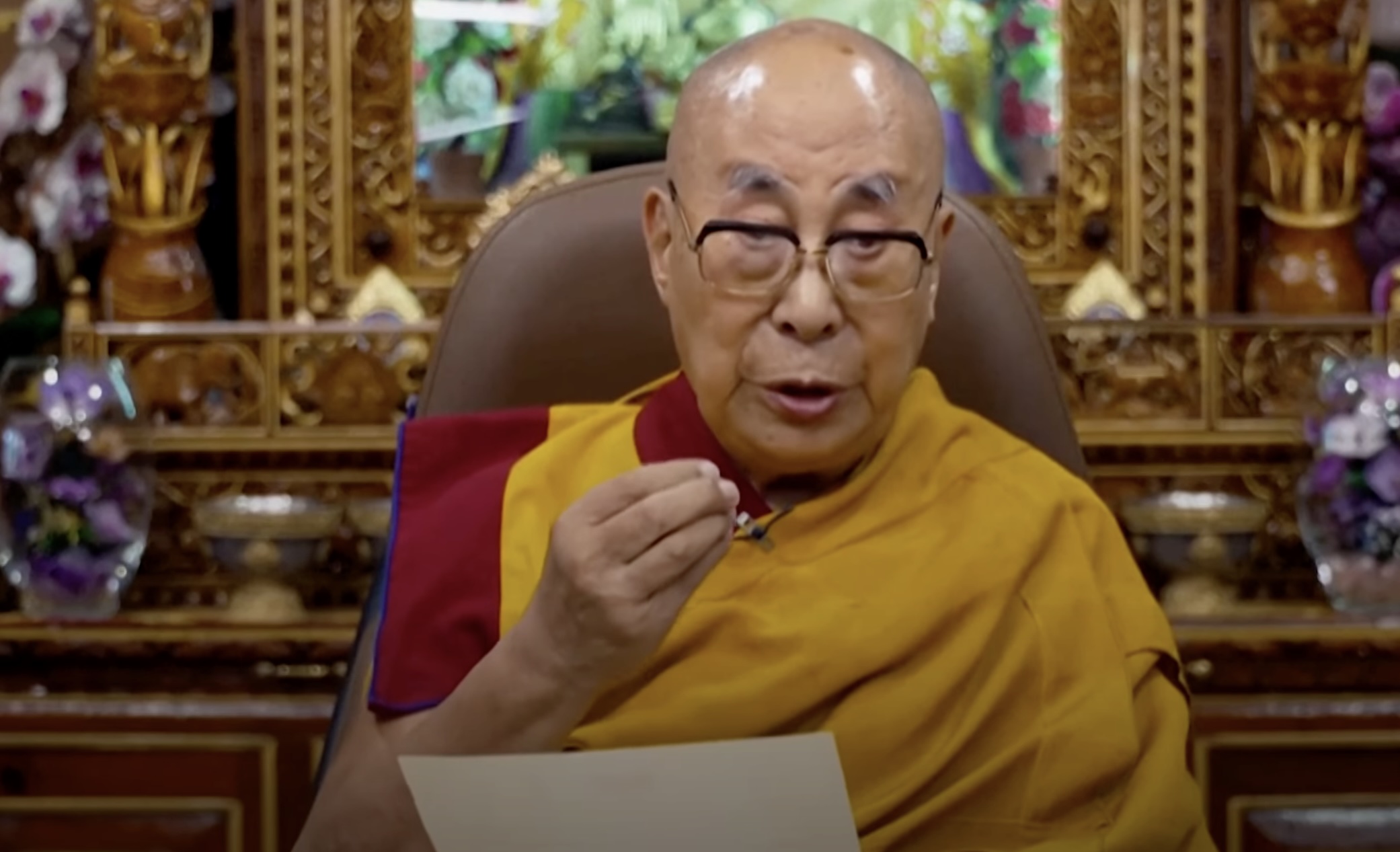Does a Robot Have Buddhanature?
A leading figure in the field of robotics investigates. The post Does a Robot Have Buddhanature? appeared first on Tricycle: The Buddhist Review.

Masahiro Mori (b. 1927) is a leading pioneer in the research and development of robotics and president of the Mukta Research Institute in Tokyo. In 1974, Mori published The Buddha in the Robot: A Robot Engineer’s Thoughts on Science and Religion, which explores the relationship between religion, Buddhism, and science. It quickly became a classic in robotics and AI (artificial intelligence) and continues to be cited in contemporary scholarship on the ethical implications emerging with the proliferation of robots in our everyday lives. Imbuing his text with relatable, real-life examples and experiences, this towering intellectual figure delivers a grounded and accessible exploration of many of Buddhism’s most important concepts and teachings.
The following excerpt was adapted from The Buddha in the Robot: A Robot Engineer’s Thoughts on Science and Religion.
A young man recently asked me: “Where is the buddhanature located in us? Is it in our heads, hearts, or somewhere else?”
The buddhanature is one of the first things a person thinks seriously about when studying Buddhism. I felt sure that the youth talking to me had recently developed an interest in Buddhist thought. Nor was I wrong.
He continued, “Buddhism teaches that everyone has a buddhanature that he must cultivate and perfect through religion. I read that one way of doing this is to respect the buddhanature in others. But I don’t understand what part of me I ought to cultivate or what part of another person I should respect. The more I think about it, the less I understand.”
“Yes, I see,” I replied, meaning that I saw his problem, not that I saw the answer. The question is one that the matter-of-fact young people of our time are apt to be troubled by, but I was not sure I could explain the buddhanature in terms the young man would understand. I wondered if I understood where and how it exists within us.
Perhaps you would say, “Don’t be silly. Anybody knows the buddhanature is in our minds and our emotions.” I thought about that, but it’s not enough. The Buddha said that “all things” have buddhanature, and “all things” clearly means not only all living beings but the rocks, the trees, the rivers, and the mountains. There is buddhanature in dogs and bears, insects, and bacteria. There must also be buddhanature in the machines and robots that my colleagues and I make.
Having said this, I don’t remember ever putting anything called a buddhanature into a robot. If the young man had asked me what part of the robot it inhabits, I would once again have been at a loss for an answer.
Since the young man’s question continued to bother me, I resolved to do a little research. Having looked through many books, I remembered that Dogen’s Shobogenzo has a section on the buddhanature. The gist of this writing, as translated freely by myself from a lecture given by Yuian Iwasawa, is as follows:
When we say that everyone has the buddhanature, it sounds rather as though the buddhanature is an organ like the heart or liver, but this is not the case. The buddhanature has no physical form and is not confined to one part of the body. It fills the whole and all the parts. The hands, the feet, and every single hair contain the buddhanature. It is present in the earth and in that which grows upon it. It is present in the wind and the sea. It inhabits that which feels and that which does not feel; it is present in delusion as in enlightenment. Everything that exists is made of buddhanature. Our body was created to manifest it, and our religious activities aim to recover it in its original state.
The buddhanature is the principle or law that moves everything. It exists throughout the universe and fills it. We are like the monkey in the famous Chinese novel who traveled to the end of the world and discovered that he had never left the Buddha’s hand. Buddhanature is neither real nor unreal.
I have written in detail about the folly of seeing only that which has form and not seeing that which lacks it or of treasuring that which is important to yourself while demeaning that which is not. We must open our eyes wide and break through man’s egocentrism to see the truth. We must see that excrement and carrion, the odor of which makes us want to hold our noses, may make a splendid feast for a hyena, vulture, or fly. The carbon dioxide we exhale as waste is necessary for plants, just as the oxygen plants give off is essential for us. Everything that exists in this world has a meaning. It is beyond presumption for human beings to decide merely based on their needs or likes and dislikes what is valuable and what is not. The first point in locating the buddhanature is to quit valuing only what we find convenient and denigrating what we do not find convenient.
We must adopt a broader sense of values to see that buddhanature is present in everything. Otherwise, we will find it in people who are good to us but not in those who mistreat us. We will be able to detect the buddhanature in the good, faithful watchdog or a playful, tail-wagging dachshund but condemn a dog that snaps at us as a useless cur.
In most recent summers, the water in Lake Okutama, which is Tokyo’s primary source of supply, has fallen to dangerously low levels. Not long ago, when a typhoon brought heavy rainfall to the Okutama district, everyone breathed a sigh of relief–until the water overflowed and the current swept away houses downstream.
The water that keeps us alive and the water that crushes life are the same, but it is not easy for us to see that its buddhanature is the same in both cases. Shakyamuni Buddha set an example for us in cases like this. Concerning his cousin Devadatta, who attempted to kill him, he said, “I must recognize his buddhanature, for he is the benefactor who led me to enlightenment.”
The point of departure for learning to see the buddhanature in everything is the realization that all things are neither real nor unreal. When we see the relationship between real and unreal in all phenomena, we will have no difficulty with the idea that the buddhanature creates everything.
The earth and the sun will serve as an example. If I were to tell you that the sun moves around the earth, you would protest that to propound the geocentric theory at this late date is unscientific in the extreme. But from another star, the earth and the sun must appear to rotate around each other, like linked stars. If the sun is considered to be in a fixed position, then the world seems to move around it; but if the earth’s position is considered fixed, then the sun appears to be rotating. The main point of the theory that Copernicus and Galileo staked their lives on was not that the earth revolves around the sun but that the sun, the moon, and the earth are all celestial bodies floating in space.
It is the same with the land and sea on our planet. When not thinking very hard, we consider the land we live on entirely separate from the sea, where the fishes and the octopuses live. On the other hand, we customarily regard lakes as belonging to the land masses. If asked how lakes differ from the ocean, we explain that the lakes are surrounded by land, whereas the ocean is not. But take a look at a world globe. To the Buddha, whose view of the earth is like ours of the globe, it would appear that the land is surrounded by ocean and that the ocean, in turn, is surrounded by land. The truth is that the land is the land because the ocean is the ocean and vice versa. The one gives the other its identity.
We are now in a better position to attack the problem of the robot’s buddhanature, but for a moment, let us consider the machine that we call an automobile, which is considerably simpler than a robot.
I’m sure most of you have a driver’s license. You consequently know that when you want a car to go to the right, you turn the steering wheel to the right, and when you want it to go left, you turn the wheel to the left. When you want to stop, you step on the brake, and so on. This is all a simple matter of control, and everybody considers it perfectly natural. The steering wheel and the brake are devices for letting the automobile know what you want it to do, just as the bit and reins are means of letting a horse know what you want it to do. And since you impose your will on the car (or the horse), you have the powerful feeling that you are causing it to behave as you wish.
But one day, an unsettling thought occurred while driving my car to work. Why am I so sure I am driving the car rather than the car driving me? My hands and feet must also move in a particular way to make the car move in a specific way. In a sense, the car makes them do that to get it to do as desired. The more I considered the motions I went through to control the machine, the more I seemed more driven than driving.
The situation is like the one we observed in trying to distinguish between land areas and sea areas. Depending on how you look at it, I could be regarded as managing the automobile, or it could be considered as managing me. To control, in effect, is to be controlled: by driving the car properly, I enable it to play a safe and useful role in life; but by controlling me, the automobile enables me to be a reliable and effective driver. The same relationship links human beings with all machines. They don’t do what you want them to unless you do what they force you to do.
There may be those who object to this line of reasoning. If the car were more wholly automated, we might not need to use our hands and feet to make it carry out our will. Could we then say that the automobile was controlling us?
The answer, of course, is yes. Think of those automatic doors that open when you step on a mat in front of them. One can easily imagine a device that would not require our stepping on the mat–or even walking in front of a photoelectric cell. There might perhaps be an audio-electronic attachment that would make the door respond to the words “open sesame,” as in the Arabian Nights. If money were no object, I see no scientific reason why we could not make a door that would open or shut when we just think “open” or “shut.” The most advanced artificial arm and hand can pick up a cigarette from a table when the wearer simply wills it to do that. A specially designed electrode is attached to the muscles between the body and the artificial limb. The electro-neural energy in the muscle caused by the wearer wishing to pick up the cigarette activates a motor that drives the arm and the fingers to act.
But no matter how highly automated a mechanical device may be, we must at least think of the command that activates it. We could therefore say that the machine exercises control over our very minds.
Anyone who has trouble accepting the reciprocity of the relationship between men and machines may observe the same principle in operation between machine and machine, where mentality is not involved. An example that comes readily to mind is a thermostat that regulates the temperature in an artificially heated room. When the temperature goes below a certain predetermined point, the thermostat turns the heat on; when the temperature has risen to the desired degree, it cuts off. The thermostat, if it had a brain, would doubtless consider itself to be masterminding the climate in the room. On the other hand, if the room could talk, it would probably claim that it controlled the thermostat, which automatically responds to the room temperature.
Since we draw a mental and verbal distinction between the thermostat, the heating system, and the air in the room, we are inclined to decide which controls which. But in fact, the three are functioning as integrated units.
All right, you say, but it remains that when men and machines are involved, men have wills, and machines do not. Is it not an insult to the dignity of man to suggest that machines are not subordinate to him? This question makes it necessary to ask just what human will is.
I can produce a robot so that when its batteries are about to give out, it will automatically seek a source of electricity–a socket or other outlet–and get them recharged. I can, in other words, endow the robot with a hunger instinct and the ability to satisfy it. To all appearances, when this robot begins to run out of power, it moves of its own free will to an electric socket that can revitalize it. Yet, I, the designer, give the robot its appetite; I cause it to act as it acts.
The robot’s relationship with me is like my relationship with the Buddha. Like all other human beings, I was created by the Buddha (by the Void). Every movement of my hand or feet, every blink of my eyelids, is the result of the Buddha’s will. There is no way in which a human being’s body or mind can separate itself even momentarily from the Buddha’s laws. To express it differently, men are appearances brought into being by the Void. This is what Yuian Iwasawa meant when he said that “every single hair contains the buddhanature.”
How is it with machines? Reason dictates that they, too, must be “appearances brought into being from the Void.” Some may argue that this is not true: that men make machines. But if men are appearances created by the Void, then whatever men create must also be created by the Void. It must also partake of the buddhanature, as do the rocks and trees around us. Specifically, since the Buddha created me, the machines and robots I design must also be created by the Buddha.
In sum, a human being made by the Buddha and endowed by the Buddha with a will necessarily imposes that will upon a machine created by the Buddha. The truth is that everything in the universe is identical to the mind of the Buddha. That which controls and that which is controlled are both manifestations of the buddhanature. We must not consider that we are operating machines. What is happening is that the buddhanature is operating the buddhanature.
I found out from robots the most crucial rule of all for living. Human minds are constantly being thrown off the track by complications. The picture is rarely clear. We are told everything has buddhanature, and we try to act accordingly. But then we discover that someone we know has done something perfectly execrable, and we begin to doubt. “How,” we ask ourselves, “could anybody who would do an evil thing like that have the Buddha inside him?” We feel that our trust has been betrayed, and we resent the person even more.
But robots are simpler than people. So are mountains and rivers and plants and animals and insects. Suppose these less complicated creatures begin to cause us difficulty. In that case, we have no trouble seeing that the fundamental cause is our failure to function in accordance with the principles of the universe. The machines, the mountains, the rivers, the plants, the animals, the insects all tell us that we, filled from head to toe with the buddhanature, have nevertheless not succeeded in being what we ought to be.
When we forget to respect the buddhanature in the wind and the water, typhoons and floods inform us of our lapse and show us in no uncertain terms how we have not lived up to the buddhanature within ourselves. When we forget the buddhanature in automobiles and other machines we have created, a warning comes to us in the form of accidents or pollution. Everything in the universe constantly tells us that the way to perfect our buddhanature is to respect the buddhanature in other things and people.

 UsenB
UsenB 































